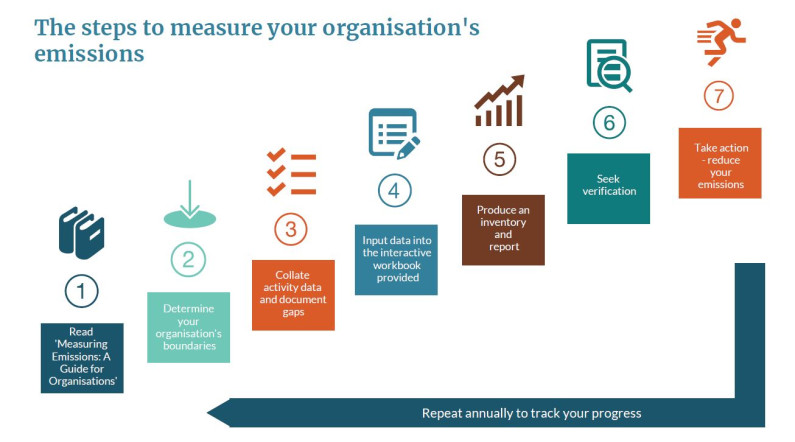Te ine tukunga: He tohutohu pakihi Measuring emissions: A guide for organisations


This guide supports organisations to measure and report their greenhouse gas (GHG) emissions. Measuring and reporting empowers organisations to manage and reduce emissions more effectively over time. Helping organisations minimise their greenhouse gas emissions will help meet New Zealand’s emission reduction targets.
This suite of documents provides standard emissions factors, technical calculations methodologies and emissions calculation examples. It describes how an organisation can develop their own greenhouse gas inventory and provides a tool for emissions calculation.
Measuring and reporting emissions can help your organisation to:

The steps to measure your organisation’s emissions:
Step 1: Read ‘Measuring emissions: a guide for organisation’.
Step 2: Determine your organisation’s boundaries.
Step 3: Collate activity data and document gaps.
Step 4: Input data into the interactive workbook provided.
Step 5: Produce an inventory and report.
Step 6: Seek verification.
Step 7: Take action – reduce your emissions.
Repeat steps 1 to 7 annually to track your progress.
The guide includes a suite of documents and tools to meet various organisations' needs.
| Detailed Guide | For users who need to know the data sources, methodologies, uncertainties, and assumptions behind the emission factors for each emission source. |
| Emissions Factor Summary | Quick look up tables providing the main emission factors for each emission source |
| Interactive Workbook | Use this spreadsheet to input your activity data, in order to work out your organisation's emissions and produce an inventory |
| Emission Factors Workbook | Quick look up tables providing the main emission factors for each emission source in excel format across multiple tabs |
| Emission Factors Flat File | Simple format for integration with software |
| Example GHG Inventory | Shows what a finished inventory might look like |
| Example GHG Report | Shows what a finished report might look like |
The guide uses data from New Zealand’s Greenhouse Gas Inventory 1990–2021, as well as data from a range of sources, including Air New Zealand, KiwiRail, and BRANZ. Most of the data is for the 2020 calendar year.
See the Detailed Guide for more information.
The guide will be updated regularly to ensure the emission factors correspond to the reporting year of the user.
This guide does not represent or form part of any mandatory reporting framework or scheme. However, the guide supports the Carbon Neutral Government Programme as it supports mandated agencies to produce greenhouse gas inventories.
If an organisation is reporting historic emissions, it should use the emission factors provided in previous versions of the guide which align with the relevant reporting year. If the desired reporting year does not have an equivalent version of the guide, use the next most recent version available.
Understanding our users’ needs enables us to make future improvements to this guide.
Email your feedback to emissions-guide@mfe.govt.nz
If you have any questions about these recalculations, or about the Measuring emissions: a guide for organisations in general email us at Emissions-guide@mfe.govt.nz
If you have questions regarding mandatory reporting as a government agency email the Carbon Neutral Government Programme team at cngp@mfe.govt.nz

Te ine tukunga: He tohutohu pakihi Measuring emissions: A guide for organisations
April 2022
© Ministry for the Environment